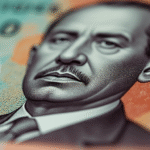On April 2, 2025, U.S. President Donald Trump announced a significant shift in international trade policy: a global tariff list unseen since the late 18th century. This day may mark the end of the globalization era.
The Perils of Cost Reduction
Instead of dwelling on the peculiarity of this action, I’d rather focus on its antidote: innovation. An innovative product offers a surprise element that increases the willingness to pay more. To tackle tariffs, it’s crucial to have a gap between the manufacturing cost and the selling price of a product or service.
Those with a smaller gap find themselves trapped in the low-cost trap and are increasingly exposed to economic uncertainty.
The Risks of Cost Reduction
Being different—not necessarily better than the competition—should be the goal of a company’s strategy. However, most executives find themselves stuck in an inertia of focusing on cost reduction, which turns into corporate anorexia. They aim to be the cheapest in the market, believing this maintains their competitiveness.
The term “competitive” is associated with price reduction, but originally, competitiveness meant challenging existing paradigms. Centers of excellence and competitiveness were not created to make things cheap; quite the contrary. Unfortunately, most fall prey to cost-cutting and disguise it as efficiency.
This efficiency is a trap because reducing costs often leads to cutting wages. For instance, Walmart’s U.S. retail workers frequently protest their low wages; after the 2008 crisis, the income of families in their socioeconomic group fell nearly 20%.
This strategy can also lead to disasters. The cost-cutting policy during the development of Boeing 737MAX made the plane less safe and, according to investigators, contributed to Lion Air flight 610’s (2018) and Ethiopian Airlines flight 302’s (2019) accidents.
According to a U.S. government report, the 2010 explosion of the Deepwater Horizon oil rig in the Gulf of Mexico—and the subsequent largest oil spill in history—had cost-cutting as one of its causes.
Thinking About Innovation
Focusing on innovation is a challenging strategy because basing business leadership on this concept requires the extra effort of dedicating—and paying for—time to think.
Innovation-focused companies can absorb additional costs. In its U.S. market conquest strategy, Mexican beer Corona positioned itself with the highest price in the market, directly competing with Heineken, the leading imported beer brand.
Corona could sustain this high-cost structure because it prioritized consistent taste and quality, bottling all its U.S. production in a single Mexico City plant.
However, according to recent research, investment in research—which discovers new things and directs science towards disruptive knowledge—has plummeted over the past 40 years.
Advantages of Innovation
Innovation allows increasing product sophistication and value, leading to higher prices. A high price is, in reality, a right earned by innovative companies.
Benefits of Innovation
- Focus on high-value market segments. In New Zealand, small Fonterra-dependent dairy cooperatives have developed niche, highly specialized, and unique products due to a clear industrial policy aiming to increase dairy sector value and sophistication.
- Deepen the science behind the business. Research and development are costly for companies. For example, the Inter-American Development Bank includes in its strategy the promotion of research center creation. The goal is for these centers—dependent on universities and governments—to generate high-value knowledge in technological innovation production.
- Expand into other products and industries. A company’s base isn’t its products (which become obsolete) but the knowledge behind them. For example, copper use in industrial food processing, air filters, or antibacterial properties in textiles.
- Orchestrate public-private cooperation through a robust industrial policy design. For example, the Basque government coordinates interaction between public and private actors to foster innovation in the region.
- Seek ideas from leading locations. Specific knowledge is crucial for organizational innovation. For example, exchanges with foreign universities have helped transform and improve New Zealand’s dairy industry.
Innovation and Specialization
The U.S. government’s universal tariff imposition has attacked economic globalization and multilateralism, forcing a rethink of market competition strategies. Companies focusing on low production costs won’t be able to absorb tariffs.
A high price is, in reality, a right earned by innovative companies. Promoting economic development through innovation and specialization, increasing product value and giving producers a unique selling point, should help mitigate risks caused by this economic warfare.






